American Architectural Styles in Midjourney
- Authors
- Name
- administrators
- @admin
Midjourney is an innovative tool that empowers homeowners, architects, and interior designers to create a wide range of house architecture styles. In this blog post, we'll focus on the American house styles that can be created with Midjourney.
America has a rich architectural heritage, with styles that reflect the country's history and culture from the colonial period to the present day. Not all American architectural styles can be shown in Midjourney, but here are a few house styles that you can generate using this AI Art generator.
Georgian
- Characteristic: symmetrical design, lower-pitched gable roofs, framed doorways, double-hung sash windows, raised basement in dressed coursed rubble.
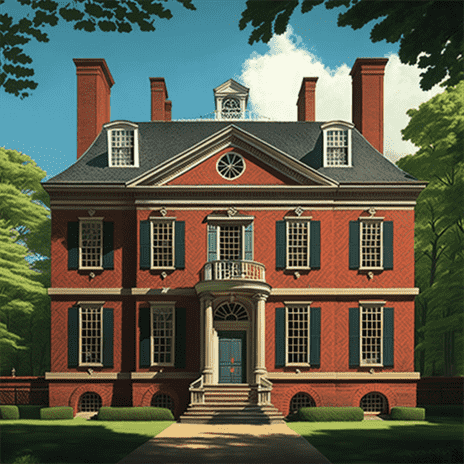
Georgian Architecture
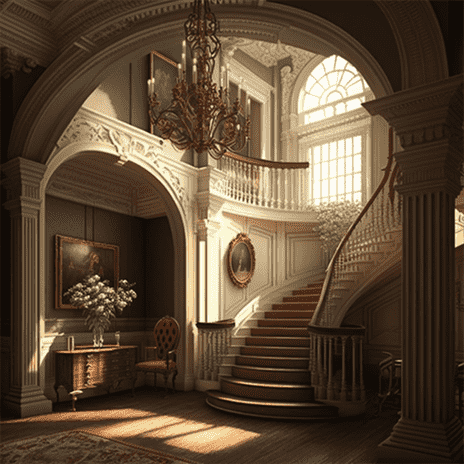
Georgian Interior Design
Georgian architecture is characterized by symmetrical facades and rectangular-shaped buildings with a symmetrical floor plan and center hall. This style is also known for its lower-pitched gable roofs, which give the buildings a more elegant and proportional appearance. The doorways of Georgian buildings were framed with decorative frontispieces, which added to their aesthetic appeal.
The double-hung sash windows of Georgian architecture were another hallmark of the style. These windows were distinguished by their thick muntins and frames, which helped to create a sense of order and balance.
Georgian architecture is known for its classical proportions and adherence to mathematical ratios, which give the buildings a timeless and sophisticated quality. This style has had a significant influence on American architecture and can be seen in some of the country's most iconic buildings, including Independence Hall and the White House.
Palladian
- Characteristic: symmetrical design, classical elements, Corinthian columns, a center arched window with two smaller windows on either side, and either a flat or hipped roof
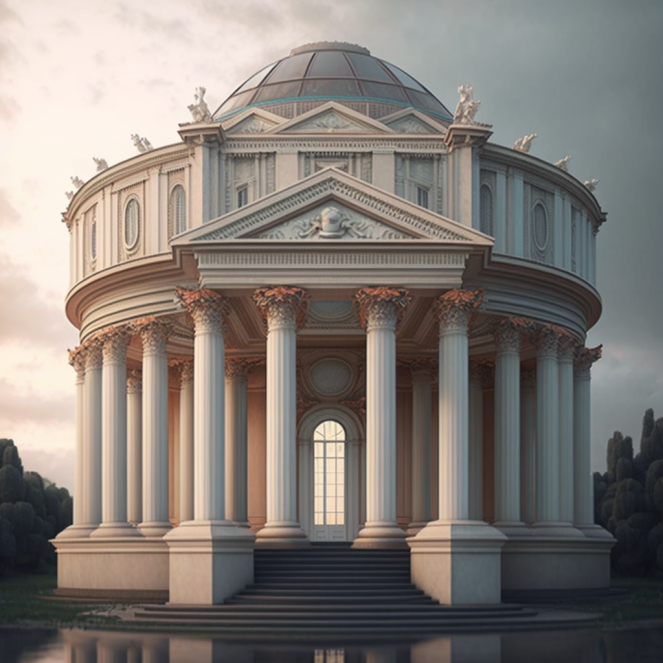
Palladian Architecture
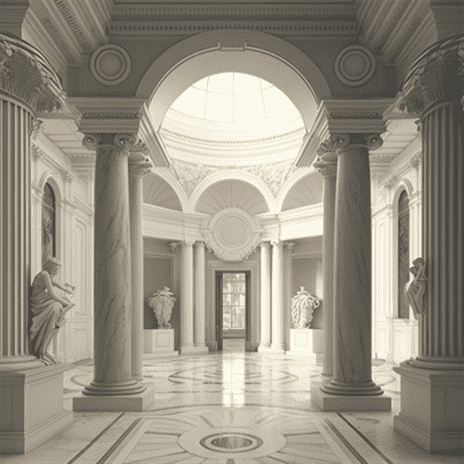
Palladian Interior Design
In the early Georgian architecture era, American architects embraced Palladian principles of stately symmetry, classical elements, and grand appearance. Palladian features such as Corinthian columns, pediments, and the use of Palladian windows, which are large three-section windows with an arched center section that is larger than the two side sections, were commonly used in grand colonial homes, public buildings, and churches.
Palladian architecture also had a notable impact on the design of plantation homes in the Southern United States, which often featured hipped or flat roofs with grander buildings featuring domed sections. The use of Palladian architecture in America helped establish a distinctive colonial style that would later influence the development of neoclassical architecture in the United States.
Moorish Revival
- Characteristic: onion-shaped domes, cusped horseshow arch, intricate and ornate decorative patterns, remarkable moorish house are Longwood in Misssissippi and Olana in Newyork
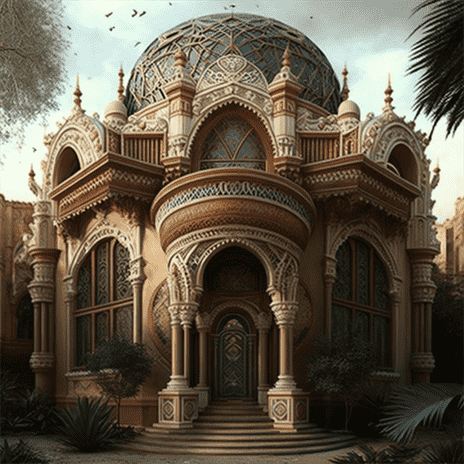
Moorish Revival Architecture
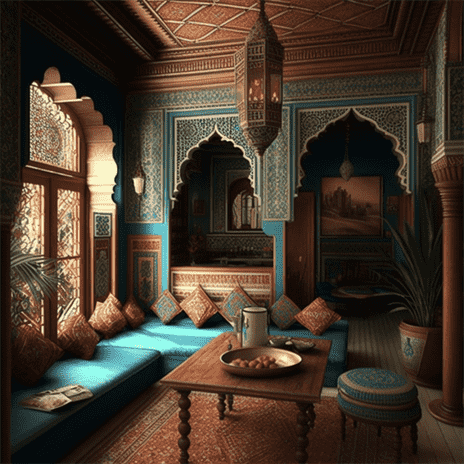
Moorish Revival Interior Design
Moorish Revival architecture is a style that emerged in the 19th century and is characterized by the use of elements inspired by traditional Moorish design. One of the most distinctive features of Moorish Revival architecture is the use of onion-shaped domes, which are often topped with a finial or crescent.
Another prominent feature is the cusped horseshoe arch, which can be seen in doorways, windows, and other architectural elements. Moorish Revival buildings are also known for their intricate and ornate decorative patterns, which often include tilework, mosaics, and other intricate details.
Shingle Style
- Characteristic: dark wood shingles, masonry ground floor, stone foundation, dormers of various shapes, and verandas.
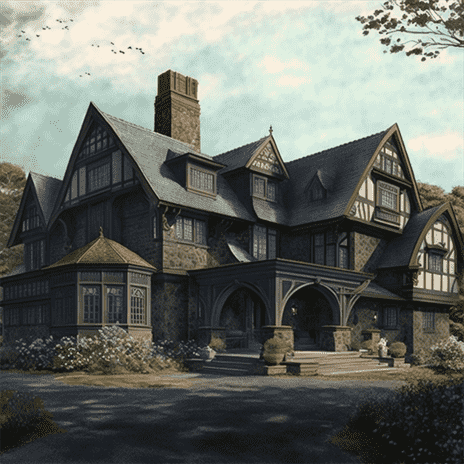
Shingle Style Architecture
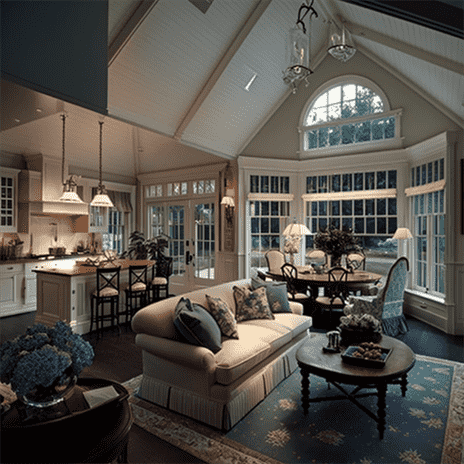
Shingle Style Interior Design
Shingle Style architecture is a distinctive American style that emerged in the late 19th century. This style is characterized by its use of dark wood shingles, masonry ground floor, and a stone foundation. The roofs are typically gabled, hipped or double-pitched, and there are dormers of various shapes.
The addition of verandahs and rounded or polygonal towers creates a smooth and flowing unity. The color scheme consists of dark, muted wood and stone hues, with a prominent but not ornate chimney. A Palladian window, an oval damesque window, and small pane window sashes are common features of Shingle Style architecture.
This style of architecture was meant to convey a sense of understated elegance and simplicity, which is evident in its use of natural materials and lack of excessive ornamentation.
Beaux Arts
- Characteristic: rich materials, formal front entrance with elaborate carving, columns in classical orders, low ground floor, mansard roof, and extra half story at the top.
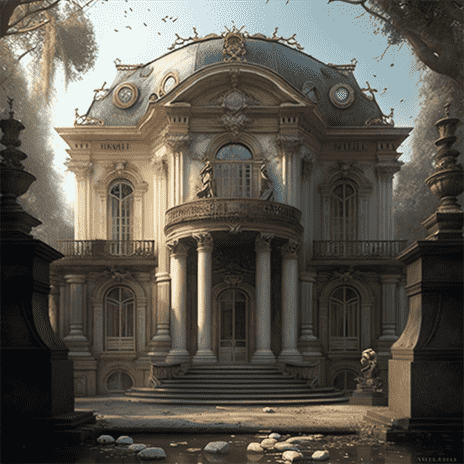
Beaux Arts Architecture
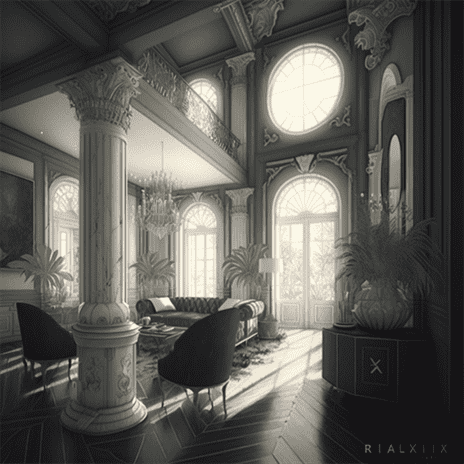
Beaux Arts Interior Design
Beaux Arts architecture is a style that originated in France in the late 19th century and became popular in the United States during the early 20th century. It is characterized by its use of rich materials, formal front entrance with elaborate carving, columns in classical orders, low ground floor, mansard roof, and extra half storey at the top.
This style is known for its grandeur and attention to detail, and it works particularly well for large public and institutional structures such as libraries, post offices, railroad stations, courthouses, city halls, and university buildings. Beaux Arts buildings often feature symmetrical facades with a central entrance flanked by columns and topped by a pediment or other decorative element.
For More Prompt Ideas
To access our Midjourney prompt library and generate your own unique prompts, please visit our Midjourney Prompt Builder
Leave a Comment
Loading comments...